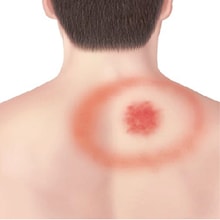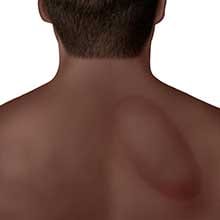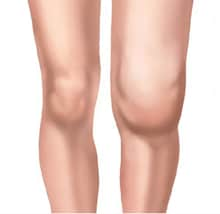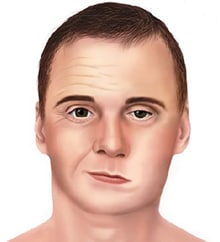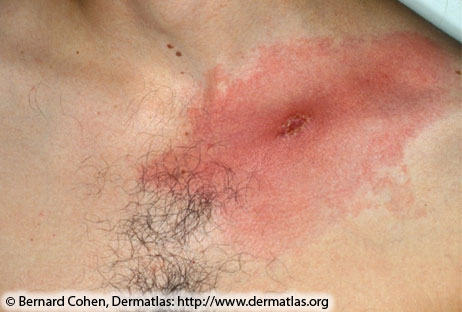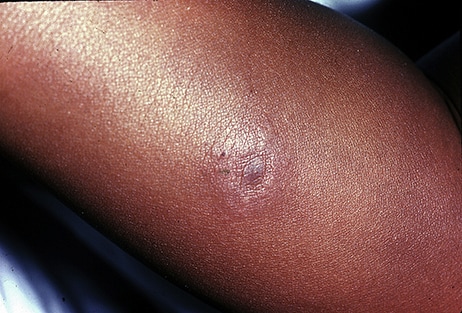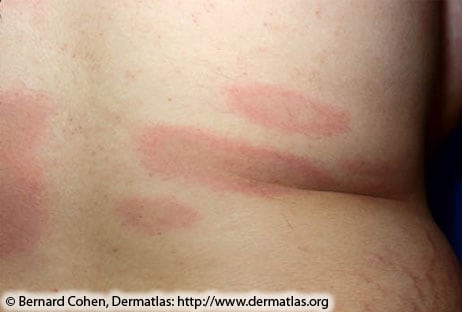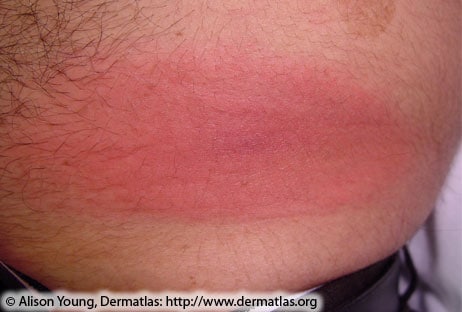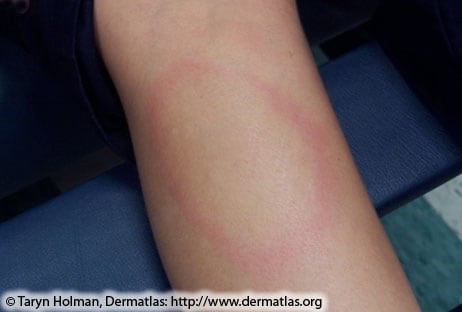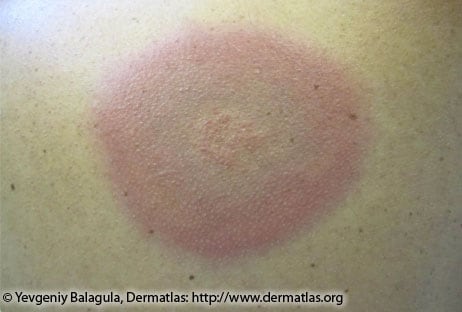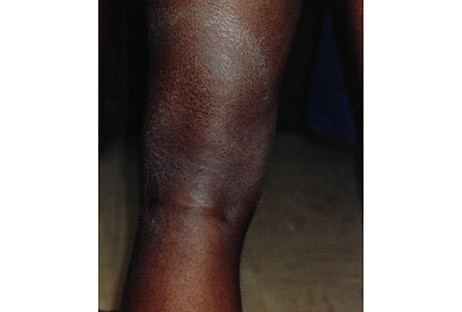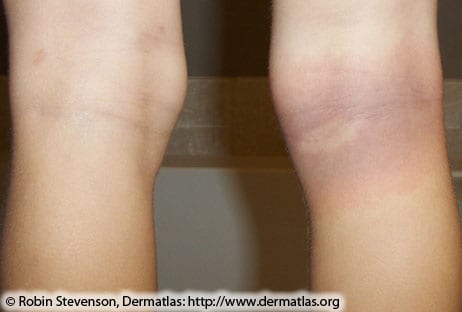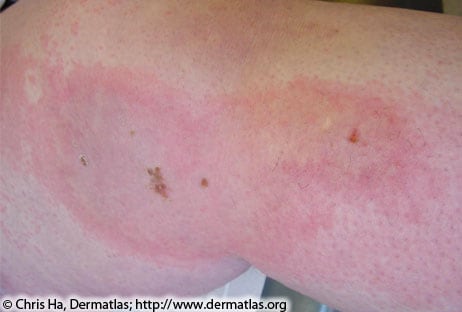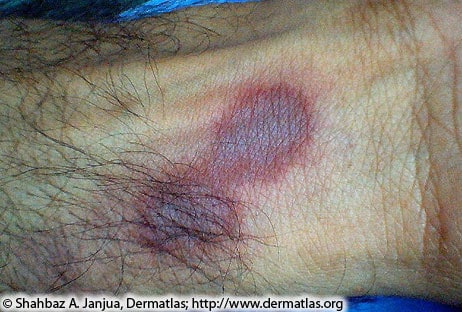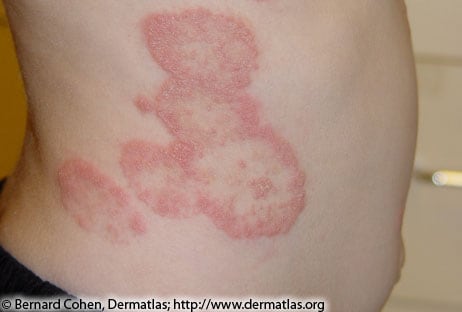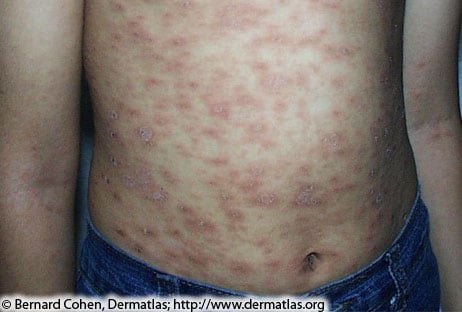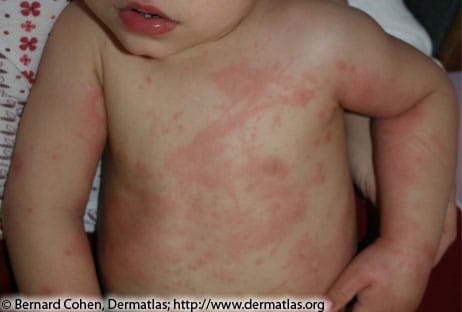Lyme Disease Rashes and Look-alikes
Signs and Symptoms of Untreated Lyme Disease
Seek medical attention if you observe any of these symptoms and have had a tick bite, live in an area known for Lyme disease, or have recently traveled to an area where Lyme disease occurs.
Untreated Lyme disease can produce a wide range of symptoms, depending on the stage of infection. These include fever, rash, facial paralysis, and arthritis.
Early Signs and Symptoms (3 to 30 Days After Tick Bite)
The appearance of the erythema migrans rash can vary widely.
About half of all denied claims that are challenged or appealed ultimately end up being covered – but only when policyholders put in the time and energy to fight the denial, the Los Angeles Times
- Fever, chills, headache, fatigue, muscle and joint aches, and swollen lymph nodes may occur in the absence of rash
- Erythema migrans (EM) rash (see photos):
- Occurs in approximately 70 to 80 percent of infected persons
- Begins at the site of a tick bite after a delay of 3 to 30 days (average is about 7 days)
- Expands gradually over several days reaching up to 12 inches or more (30 cm) across
- May feel warm to the touch but is rarely itchy or painful
- Sometimes clears as it enlarges, resulting in a target or “bull’s-eye” appearance
- May appear on any area of the body
- Does not always appear as a “classic” erythema migrans rash
Later Signs and Symptoms (days to months after tick bite)
- Severe headaches and neck stiffness
- Additional EM rashes on other areas of the body
- Facial palsy (loss of muscle tone or droop on one or both sides of the face)
- Arthritis with severe joint pain and swelling, particularly the knees and other large joints.
- Intermittent pain in tendons, muscles, joints, and bones
- Heart palpitations or an irregular heart beat (Lyme carditis)
- Episodes of dizziness or shortness of breath
- Inflammation of the brain and spinal cord
- Nerve pain
- Shooting pains, numbness, or tingling in the hands or feet
More about rashes
- A small bump or redness at the site of a tick bite that occurs immediately and resembles a mosquito bite, is common. This irritation generally goes away in 1-2 days and is not a sign of Lyme disease.
- A rash with a very similar appearance to EM occurs with Southern Tick-associated Rash Illness (STARI), but is not Lyme disease
- Ticks can spread other organisms that may cause a different type of rash.
user md solid icon
Diagnosis & Testing
prescription bottle solid icon
Page last reviewed: January 15, 2021
CONTACT CDC
Call 800-232-4636
CONNECT WITH US- U.S. Department of Health & Human Services
- Accessibility
- External Links
- Privacy
- Policies
- No Fear Act
- FOIA
- Nondiscrimination
- OIG
- Vulnerability Disclosure Policy
- USA.gov
Exit Notification / Disclaimer Policy
- The Centers for Disease Control and Prevention (CDC) cannot attest to the accuracy of a non-federal website.
- Linking to a non-federal website does not constitute an endorsement by CDC or any of its employees of the sponsors or the information and products presented on the website.
- You will be subject to the destination website’s privacy policy when you follow the link.
- CDC is not responsible for Section 508 compliance (accessibility) on other federal or private website.
Cancel Continue
CDC.gov Privacy Settings
We take your privacy seriously. You can review and change the way we collect information below.
Performance Cookies Checkbox
Performance CookiesThese cookies allow us to count visits and traffic sources so we can measure and improve the performance of our site. They help us to know which pages are the most and least popular and see how visitors move around the site. All information these cookies collect is aggregated and therefore anonymous. If you do not allow these cookies we will not know when you have visited our site, and will not be able to monitor its performance.
Functional Cookies Checkbox
Functional CookiesCookies used to make website functionality more relevant to you. These cookies perform functions like remembering presentation options or choices and, in some cases, delivery of web content that based on self-identified area of interests.
Campaign Cookies Checkbox
Campaign CookiesCookies used to track the effectiveness of CDC public health campaigns through clickthrough data.
Social Media Cookies Checkbox
Social Media CookiesCookies used to enable you to share pages and content that you find interesting on CDC.gov through third party social networking and other websites. These cookies may also be used for advertising purposes by these third parties.
Confirm Choices
Confirmed!
Thank you for taking the time to confirm your preferences. If you need to go back and make any changes, you can always do so by going to our Privacy Policy page.
Lyme Disease Rashes and Look-alikes
Description:
Circular, expanding rash with target-like appearance.Expanding rash with central crust
Photo Credit: Bernard Cohen
Description:
Expanding lesion with central crust on chest.Expanding erythema migrans
Photo Credit: Reprinted from Bhate C, Schwartz RA. Lyme disease: Part I. Advances and perspectives external icon . J Am Acad Dermatol 2011;64:619-36, with permission from Elsevier.
Description:
Early, expanding erythema migrans with nodule.Multiple rashes, disseminated infection
Photo Credit: Bernard Cohen
Description:
Early disseminated Lyme disease; multiple lesions with dusky centers.Red, oval plaque
Photo Credit: Alison Young
Description:
Red, expanding oval-shaped plaque on trunk.Expanding rash with central clearing
Photo Credit: Taryn Holman
Description:
Circular, expanding rash with central clearing.Bluish hued rash, no central clearing
Photo Credit: Yevgeniy Balagula
Description:
Bluish hued without central clearing.Expanding lesion, no central clearing
Photo Credit: Gary Wormser
Description:
Expanding lesion without central clearing on back of knee.Red-blue lesion with central clearing
Photo Credit: Robin Stevenson
Description:
Red-blue lesion with some central clearing on back of knee.Insect bite hyper-sensitivity
Photo Credit: Chris Ha
Description:
Large itchy rash caused by an allergic reaction to an insect bite.Fixed drug reaction
Photo Credit: Shahbaz A. Janjua
Description:
A skin condition that occurs up to two weeks after a person takes a medication. The skin condition reappears at the same location every time a person takes that particular medication.Ringworm (Tinea corporis)
Photo Credit: Bernard Cohen
Description:
Ringworm is a common skin infection that is caused by a fungus. It’s called “ringworm” because it can cause a ring-shaped rash that is usually red and itchy with raised edges.Pityriasis rosea rash
Photo Credit: Bernard Cohen
Description:
A rash without a known cause that can be a round or oval, pink, and scaly with a raised border. It can sometimes itch. Larger patches than the one shown here are also common.Granuloma annulare rash
Photo Credit: Bernard Cohen
Description:
Reddish bumps on the skin arranged in a circle or ring.Urticaria multiforme
Photo Credit: Bernard Cohen
Description:
Also known as hives. Often caused by an allergic reaction to food, an infection, or a medicine. May burn or itch.Page last reviewed: October 9, 2020
CONTACT CDC
Call 800-232-4636
CONNECT WITH US- U.S. Department of Health & Human Services
- Accessibility
- External Links
- Privacy
- Policies
- No Fear Act
- FOIA
- Nondiscrimination
- OIG
- Vulnerability Disclosure Policy
- USA.gov
Exit Notification / Disclaimer Policy
- The Centers for Disease Control and Prevention (CDC) cannot attest to the accuracy of a non-federal website.
- Linking to a non-federal website does not constitute an endorsement by CDC or any of its employees of the sponsors or the information and products presented on the website.
- You will be subject to the destination website’s privacy policy when you follow the link.
- CDC is not responsible for Section 508 compliance (accessibility) on other federal or private website.
Cancel Continue
CDC.gov Privacy Settings
We take your privacy seriously. You can review and change the way we collect information below.
Performance Cookies Checkbox
Performance CookiesThese cookies allow us to count visits and traffic sources so we can measure and improve the performance of our site. They help us to know which pages are the most and least popular and see how visitors move around the site. All information these cookies collect is aggregated and therefore anonymous. If you do not allow these cookies we will not know when you have visited our site, and will not be able to monitor its performance.
Functional Cookies Checkbox
Functional CookiesCookies used to make website functionality more relevant to you. These cookies perform functions like remembering presentation options or choices and, in some cases, delivery of web content that based on self-identified area of interests.
Campaign Cookies Checkbox
Campaign CookiesCookies used to track the effectiveness of CDC public health campaigns through clickthrough data.
Social Media Cookies Checkbox
Social Media CookiesCookies used to enable you to share pages and content that you find interesting on CDC.gov through third party social networking and other websites. These cookies may also be used for advertising purposes by these third parties.
Confirm Choices
Confirmed!
Thank you for taking the time to confirm your preferences. If you need to go back and make any changes, you can always do so by going to our Privacy Policy page.

